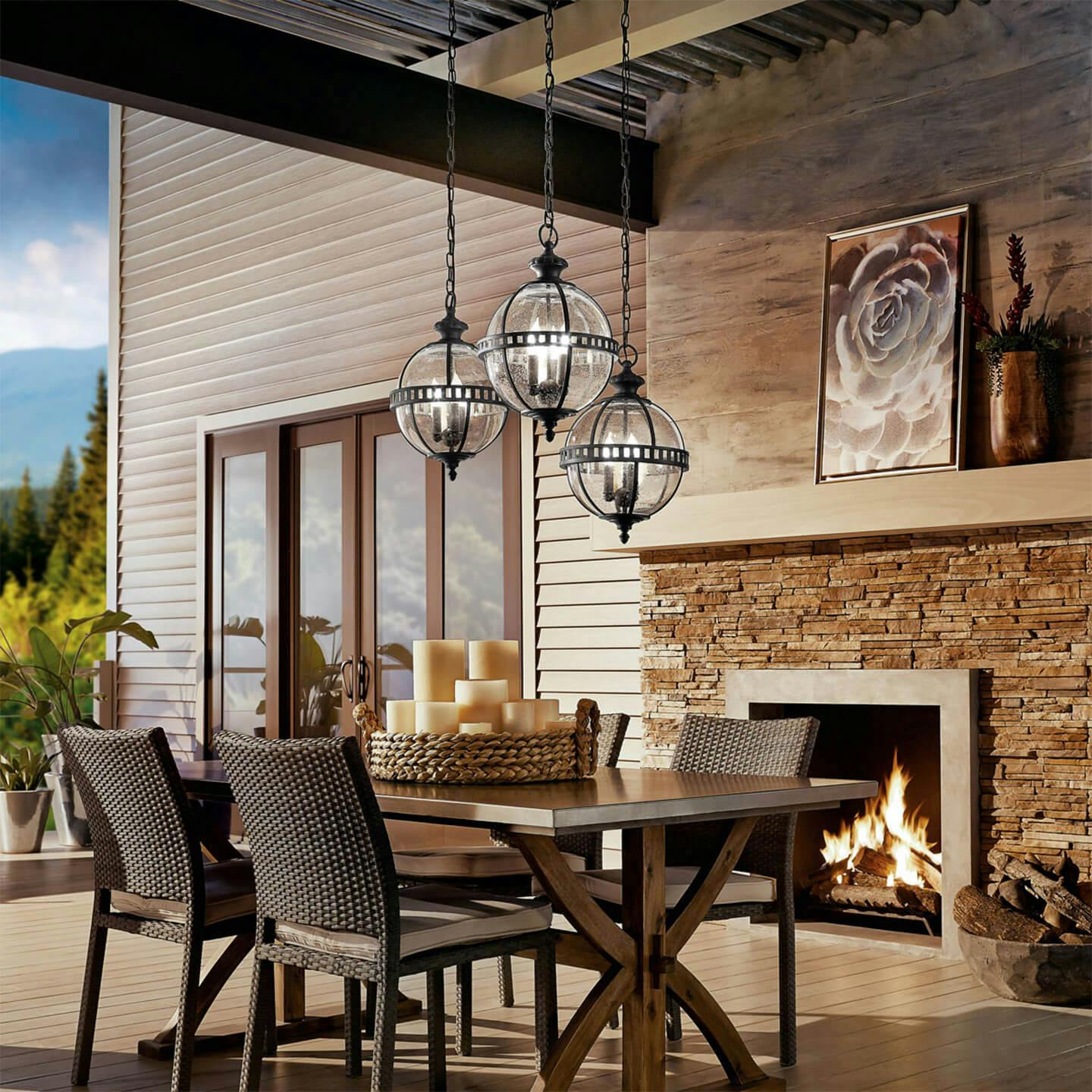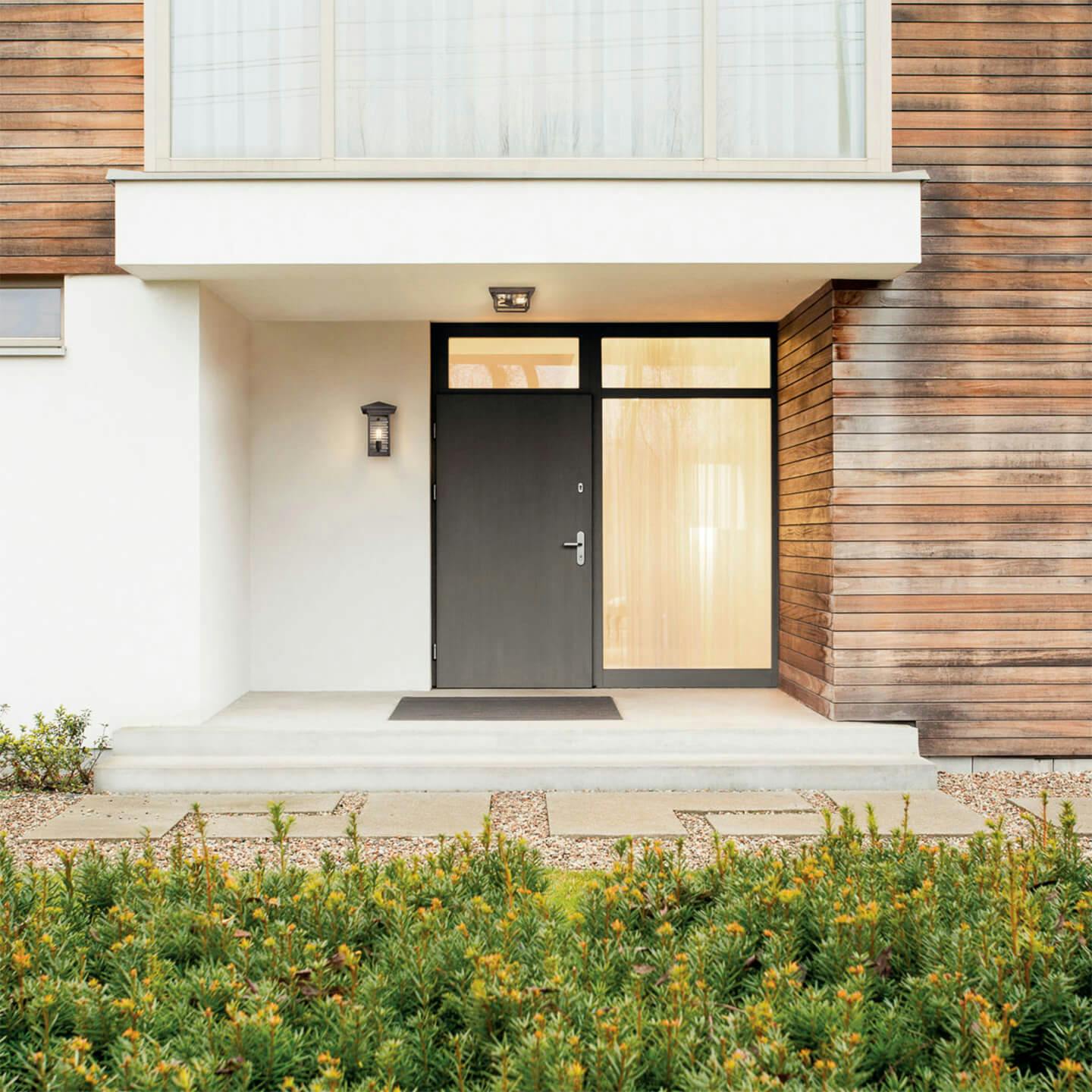
Outdoor Lighting Guide
Outdoor Lighting Basics
It’s easy to list all the benefits of outdoor lighting, but choosing the right lights isn’t so simple. From fixtures to bulbs to color temperature, where do you start? We’re here to light the way. Here are a few considerations to help you select the right outdoor lighting for your home.
Type, Purpose and Location
A good outdoor lighting plan includes layers–multiple sources that work together to create eye-catching and functional effects. Luckily, many of our products come in families, which makes coordinating fixtures easy. Or, you can blend different styles and finishes for an eclectic look.
Use the chart below as a general guide for outdoor lighting types and placement.
Location | Type and/or Size |
|---|---|
Front Door | Large outdoor wall-mounted unit |
Front Porch - single story | Outdoor ceiling flush mount |
Front porch – multi-story | Outdoor pendants |
Front porch – multi-story | 2nd or 3rd largest size wall mount |
Secondary/side entrance | 2nd or 3rd largest size wall mount |
Rear door | Small outdoor wall mount |
Post or pier | Outdoor post mount (if multiple, vary sizes) |
General lighting (covered space) | Outdoor ceiling fan |
Task lighting | Outdoor hanging pendant/chandelier |
Portable area lighting | Portable outdoor LED lantern |
You can follow these guidelines or get even more creative. Use a pair of pendants over a patio dining area instead of a chandelier, or cluster three pendants over an outdoor seating area for a different look. Whatever you choose, make sure it suits your outdoor style.
Ratings- Damp and Wet Rated
Outdoor lighting fixtures feature hardware and finishes that are designed to withstand tough weather. In the U.S., they’re assessed by Underwriters Laboratories (UL), Intertek (ETL), and CSA International (CSA) independent product safety certification organizations. Typically classified as damp or wet rated, your space and location determine which one you need.

Damp Rated
A damp rated fixture is ideal for covered places—think porches and patios—and cannot be directly exposed to water, even in a storm. Kichler Lighting offers more than 1,200 damp rated products.

Wet Rated
A wet rated fixture can be exposed to direct precipitation. Kichler Lighting offers more than 1,600 wet rated products.
For particularly harsh conditions—coastal saltwater areas or extreme cold, heat or sun—Kichler Lighting offers Climates™, wet rated outdoor fixtures designed to stand up to Mother Nature.
Tip: Just because a light or ceiling fan is rated for outdoor use doesn’t mean you can’t use it indoors. Wet or damp rated outdoor wall lights, pendants, chandeliers and ceiling fans may work beautifully inside, too. However, landscape lighting (path, accent, deck or hardscape lights) is not designed for indoor use.
Energy Efficiency
Did you know that the U.S. Department of Energy found that homeowners use more electricity on outdoor lighting than indoors? Energy-efficient outdoor lights help the cause. Even if you choose an incandescent-based lighting fixture, you can use energy-efficient bulbs.
Outdoor LEDs top the list for recommended efficient outdoor lighting. They offer:
Long life (around 15 years): low to no maintenance
Low energy use cuts electricity bills
Color control: color temperature choices set the mood and enhance décor
Fewer insect annoyances: high-quality LEDs produce less heat and UV light, both of which attract bugs
Integrated LED lighting fixtures are now available in multiple sizes and styles, and offer long life and proven performance.
CFLs are another energy-efficient option. Typically, they are less expensive than LEDs, but not as efficient. They also don’t fare well in cold climates, so LEDs are a smart choice if you live in an area with cold winters.
The Style of Your Home
Whether you have a small bungalow or a stately Victorian, your home has a distinctive look and feel. Your lighting should match its personality.
First, assess the architectural style. When was it built? Is it more modern or traditional? Are there any defining characteristics?
Next, look at the colors that make up your stonework, siding and roofing. Earth tones, beiges and red brick work best with outdoor lighting fixtures in similar finishes, such as bronze, brass or copper. For slate, black or grey tones, try fixtures with a black, pewter, chrome, nickel, zinc or white finish.
Finally, don’t forget the proportions. Homes built between 1950 and 2004 are likely to have 8’ interior ceilings, meaning the exterior elevation is more shallow than homes built outside of that timeframe. Shorter exterior light fixtures look best on these homes.
For the majority of older and newer homes, tall lighting may look better. Townhomes also demand taller, narrower proportions.